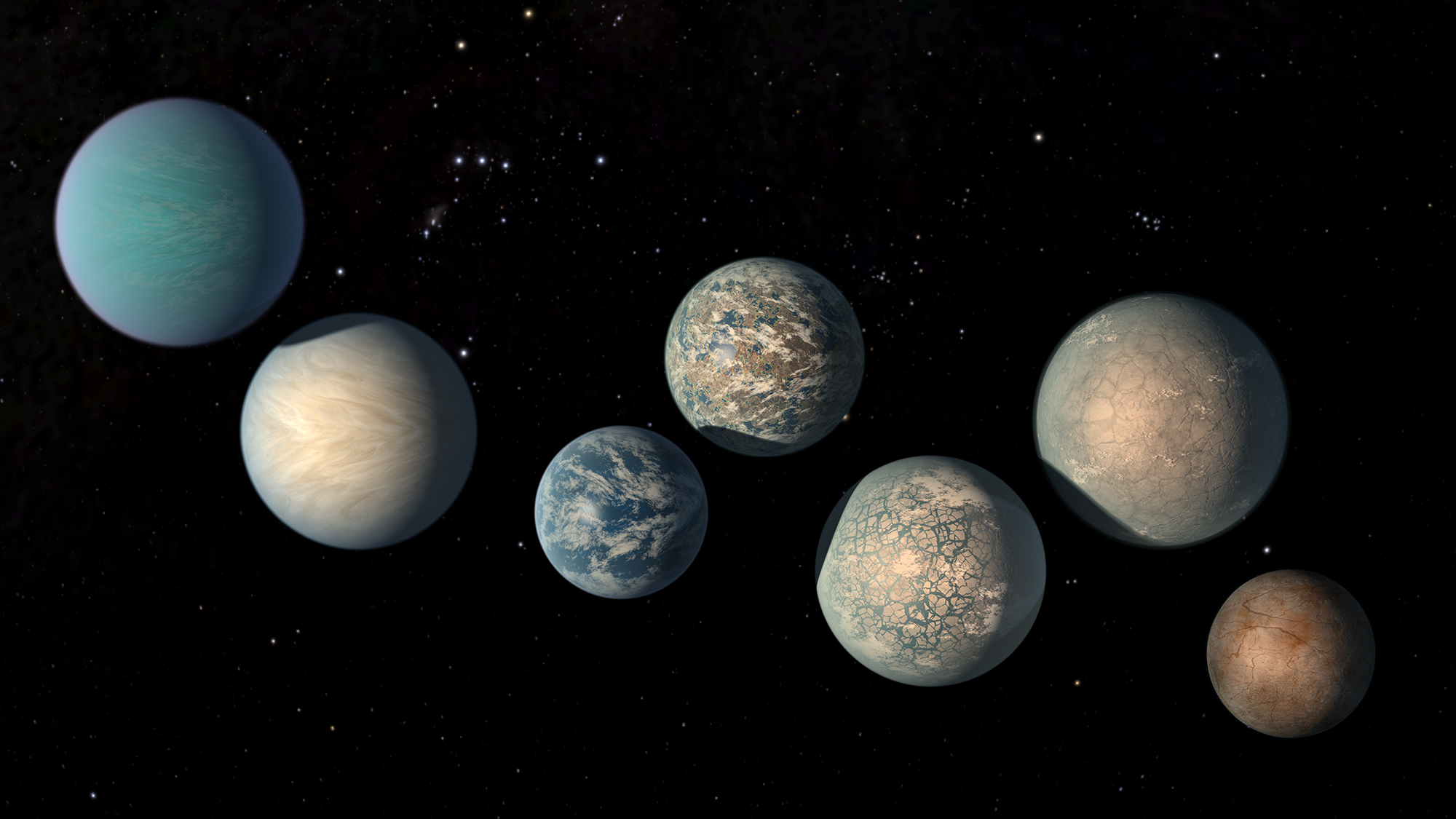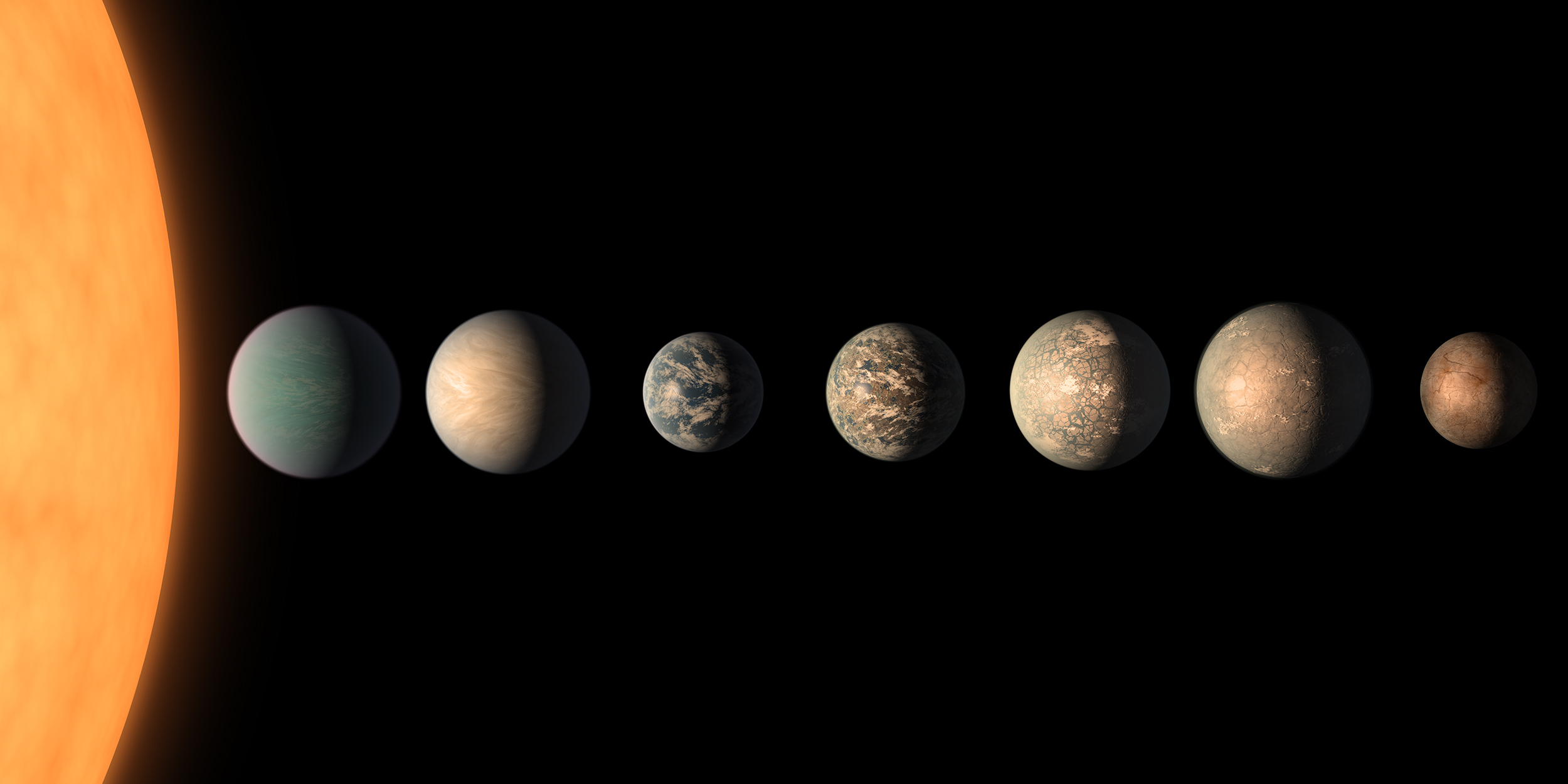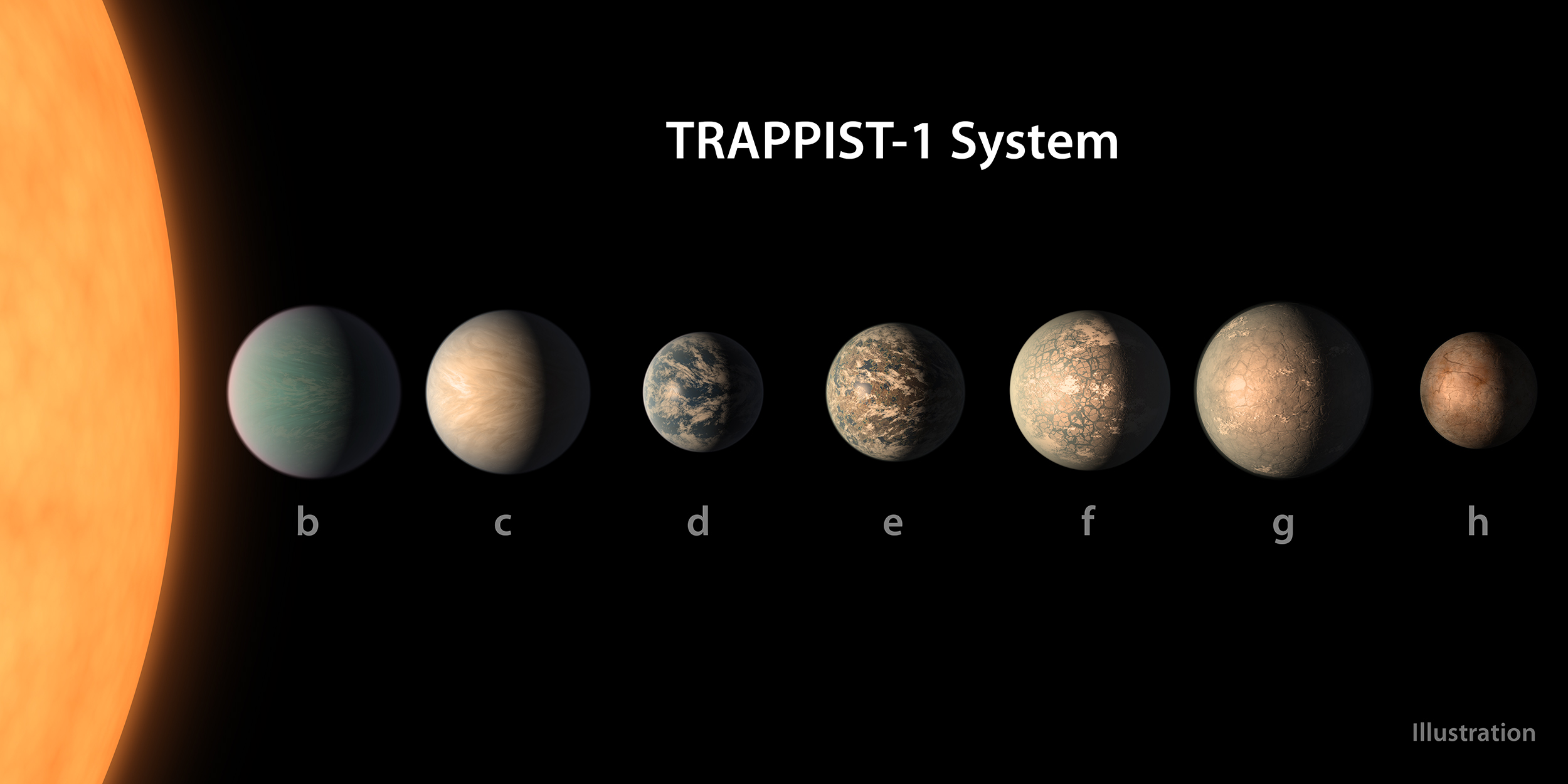What the TRAPPIST-1 planets could look like
Researchers at the University of Bern are providing the most precise calculations so far of the masses of the seven planets around the star TRAPPIST-1. From this, new findings are emerging about their density and composition: All TRAPPIST-1 planets consist primarily of rock and contain up to five percent water. This is a decisive step for determining the habitability of these planets.
Of the known exoplanets (planets outside our solar system), TRAPPIST-1e is so far the one that is most similar to the Earth in terms of its size, density, and the amount of radiation that it receives from its star. It is the only one of the seven TRAPPIST-1 planets that is somewhat denser than the Earth, and it is not ruled out that liquid water exists on its surface. At least five of the lighter planets have a covering of volatile substances in the form of atmospheres, oceans or layers of ice. Their water content is up to 5 percent, which is a lot when compared to the Earth, where the seas account for only 0.02% of the planet’s mass.
A First in Exoplanet Research
These are new findings from an international research team under the direction of Simon Grimm of the Centre for Space and Habitability (CSH) of the University of Bern and the National Centre of Competence in Research PlanetS. "I have calculated the masses of these planets", explained the researcher: "These values form the basis for further models that allow statements about composition."
The significance of these findings was also emphasised by Brice-Olivier Demory, Professor at CSH and co-author of the study published in the journal "Astronomy and Astrophysics": "We were able to measure precisely the density of exoplanets that are similar to Earth in terms of their size, mass and irradiation, with an uncertainty of less than 10%, which is a first and a decisive step in the characterisation of potential habitability."
The seven planets around the cool red dwarf star TRAPPIST-1 were discovered during the past two years with ground-based instruments and NASA space telescopes. Seen from Earth, they pass directly in front of their parent star, darkening it during these so-called transits. It is normally possible to deduce how large a planet is from the reduction of radiation during transits – but not how heavy it is. To do this, something more is required: "In the TRAPPIST-1 system, the planets are so close together that they perturb each other", explains Simon Grimm. "This causes a slight shift in the times of each transit. Using a computer model, one can simulate the planetary orbits until the calculated transits agree with the observed values, which thus also yields the planets’ masses."
A 35-Dimensional Problem
Altogether, the researchers had to determine 35 parameters and adjust these as precisely as possible. Simon Grimm developed a computer code and a new algorithm, with which he managed to solve this 35-dimensional problem. "I worked almost a year on this project until everything worked", explained the CSH researcher: "Right at the end, it took just a few more days for the calculations at the University of Bern with computers with parallel graphics processors."
Thanks to the new mass calculations, the densities of the planets can now be estimated more accurately than was previously possible, leading to new findings about their composition. For example, the research team came to the conclusion that the two innermost planets, TRAPPIST-1b and c, presumably have a dense atmosphere, whereas TRAPPIST-1e is probably a rocky planet with a thin atmosphere. TRAPPIST-1d has only around 30% of the Earth’s mass and is thus the lightest of the seven planets. It is presumably surrounded by volatile substances such as water – but it is unknown whether this is in the form of an extended atmosphere, ocean or ice layer. The three outermost planets, on the other hand, TRAPPIST-1f, g and h, are so distant from the sun that their surfaces are probably enveloped in a layer of ice.
A study with the Hubble Telescope published at almost the same time, in the journal "Nature Astronomy", was unable to detect the presence of a hydrogen-rich atmosphere on any of the investigated planets. It is therefore hoped that more precise findings can be obtained about the planetary atmospheres from NASA’s James Webb Space Telescope, which will start operation in 2019. During the next few years, using a telescope called SAINT-EX which is currently being built in Mexico, Demory and his team also want to detect more planetary systems orbiting stars similar to TRAPPIST-1 and to analyse them with their fast computer code.
Publication details:S. Grimm et al.: «The nature of the TRAPPIST-1 exoplanets», Astronomy and Astrophysics, 05.02.2018, in press. |
2018/02/05




